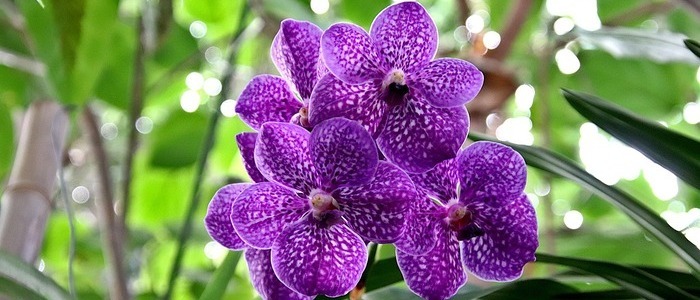Welcome to our blog! Today we’re talking about Purple Velvet Plant care. The Purple Velvet Plant, also known as Gynura aurantiaca, is a unique and beautiful houseplant that adds a touch of pizzazz to any home. It has shiny purple leaves with velvety soft texture and bright yellow flowers that add a pop of color to any room.
If you’re looking for an easy-care houseplant that will add some life and beauty to your home, the Purple Velvet Plant is definitely worth considering. With just a few simple tips, you can be sure your plant will thrive in no time! Read on for our guide to Purple Velvet Plant care. Enjoy!
We’ll cover topics such as:
– Soil and potting requirements
– Light and temperature conditions
– Watering frequency
– Fertilizer needs
– Propagation methods
By the end of this article, you’ll have all the information you need to create the perfect environment for your Purple Velvet Plant. So let’s get started!

Purple Velvet Plant Frequently Asked Questions
How do you propagate the purple velvet plant?
Propagating the purple velvet plant is a great way to expand your collection or share it with friends. One of the easiest methods of propagation is by taking stem cuttings. To do this, simply cut a healthy stem from the plant, making sure it has at least two nodes. Remove the lower leaves from the stem, leaving only a few at the top. Dip the cut end of the stem in rooting hormone and plant it in moist soil.
Is the purple velvet plant an indoor plant?
Yes, the purple velvet plant is typically grown as an indoor plant. It is native to tropical regions and prefers warm, humid environments. It can be grown outdoors in warm climates, but it is often grown as a houseplant in cooler regions. The plant is known for its striking purple foliage and velvety texture, making it a popular choice for adding color and texture to indoor spaces.
Purple Velvet Plant Care Tips
Caring for the purple velvet plant (Gynura aurantiaca) is easy and rewarding! This vibrant beauty is sure to bring life and color into any indoor space.
Here are some tips to help you keep your purple velvet plant looking its best:
1. Lighting: The purple velvet plant prefers bright, indirect light. Place it in a spot with plenty of indirect sunlight, but make sure to protect it from direct rays which can cause the leaves to scorch.
2. Water: The purple velvet plant is a succulent and prefers less water than other houseplants. Water your plant whenever the soil is completely dry, making sure not to over-water.
3. Fertilizer: During the summer months, fertilize your plant with an all-purpose, water-soluble fertilizer every two weeks. You can also feed your plant with a liquid fertilizer weekly during this time.
4. Pruning: If your purple velvet plant starts to look leggy or spread out, prune it back in order to promote more bushy growth.
5. Propagation: If you want to expand your collection of purple velvet plants, propagation is a great option! Wait until springtime and then take cuttings from the tips of the plant’s stems. Place them in water or moist soil and they should start to root in a few weeks.
By following these simple tips, you can keep your purple velvet plant looking its best!
Propagating the Purple Velvet Plant
Propagating a purple velvet plant is a great way to add texture and colour to your home or garden. The key is to choose the right techniques for propagating these beautiful plants so that they can flourish and thrive in their new environment. Here are some of the best methods for propagating a purple velvet plant:
1. Division: Divide your purple velvet plant into several pieces with a sharp knife or pruning shears. Each piece should have at least one mature leaf and root system. Place the divided pieces in a light potting soil mix, water them thoroughly, and cover them with plastic to retain moisture. After a few weeks, the divided plants should be ready for transplanting.
2. Cuttings: Take a cutting from your healthy purple velvet plant and place it in moist potting soil or sand in a light, airy environment. Keep the soil moist until the cutting begins to form roots and then transplant into a larger pot.
3. Air Layering: Air layering is a great method for propagating purple velvet plants. Choose a healthy stem and carefully cut the bark in two places, one above the node (point of leaf emergence) and one below it. Cover the wounds with damp moss or sphagnum peat, then wrap the entire branch in plastic to retain moisture. After several weeks, roots should form and you can carefully remove the plastic and cut off the newly rooted section of the stem.
No matter which propagation method you choose, caring for your purple velvet plant is essential to its health and growth. Make sure to keep it in a warm, bright location with good air circulation, water regularly, and provide fertilizer during the growing season.
Tips for Pruning Your Purple Velvet Plant
Proper pruning of your Purple Velvet Plant is an important step in making sure it grows and flourishes in your home. Here are some tips to help you prune your plant correctly:
1. Prune when the plant is actively growing. Most Purple Velvet Plants will grow from late spring through early fall, so these are the best times to prune.
2. Remove any dead or damaged leaves and stems. They won’t contribute to the health of your plant, so getting rid of them will help it grow better.
3. If you want a fuller, bushier plant, trim off some of the top branches when they reach 8 inches in length. This will encourage new stems and leaves to grow out from the sides, creating a fuller look.
4. When pruning, use sharp shears or scissors to make clean cuts so you don’t damage the plant.
5. Keep an eye on your Purple Velvet Plant, and trim away any shoots that grow off the sides of the stem. This will keep the plant looking neat and tidy.
With these tips, you’ll be able to properly prune your Purple Velvet Plant and keep it looking healthy and happy! Good luck!
Common Problems Known to Affect the Purple Velvet Plant
The purple velvet plant (Gynura aurantiaca) is a beautiful and unique tropical houseplant that adds a vibrant splash of color to any room. Unfortunately, due to its delicate nature, it can be prone to certain problems if not cared for properly. Here are some of the common problems you may encounter with your purple velvet plant:
1. Underwatering: This is probably the most common problem that affects purple velvet plants. Make sure you check the soil regularly and water your plant when it feels dry to the touch, about 1 inch down in the pot. If you’re unsure how much to water, follow this rule of thumb—less is always better than too much when it comes to watering a purple velvet plant.
2. Overwatering: The second most common problem with purple velvet plants is overwatering. Make sure your pot has good drainage, and avoid keeping the soil constantly wet as this can cause root rot. If you notice yellowing or wilting leaves, chances are you’re giving your plant too much water.
3. Temperature: While most purple velvet plants flourish in warm temperatures, they can also be sensitive to extreme cold or heat. Try to keep the temperature between 70-85 degrees Fahrenheit (21-29 degrees Celsius). A sudden change in temperature can cause shock and resulting damage to the leaves of the plant.
4. Diseases: Your purple velvet plant may also be susceptible to certain diseases, including root rot, powdery mildew and aphids. To combat these problems, it’s important to practice good hygiene when caring for your plant, such as sanitation of tools or pots used for replanting and using insecticidal soap or neem oil to treat pests.
Caring for a purple velvet plant can be rewarding, but you must give it the attention it needs in order to keep it healthy and beautiful. If you follow these simple tips, your purple velvet plant will remain in great condition for many years to come!
Conclusion
Taking care of the purple velvet plant is not as tricky as it may seem! With enough light and regular watering, you can keep your plant alive and thriving. Don’t forget to give your plant occasional misting with lukewarm water to help maintain humidity levels. Additionally, you should feed your plant every few weeks with a balanced fertilizer.
With these simple steps and some TLC, you can keep your purple velvet plant looking its best! So why not give it a try today and start enjoying the beauty of this unique houseplant?













